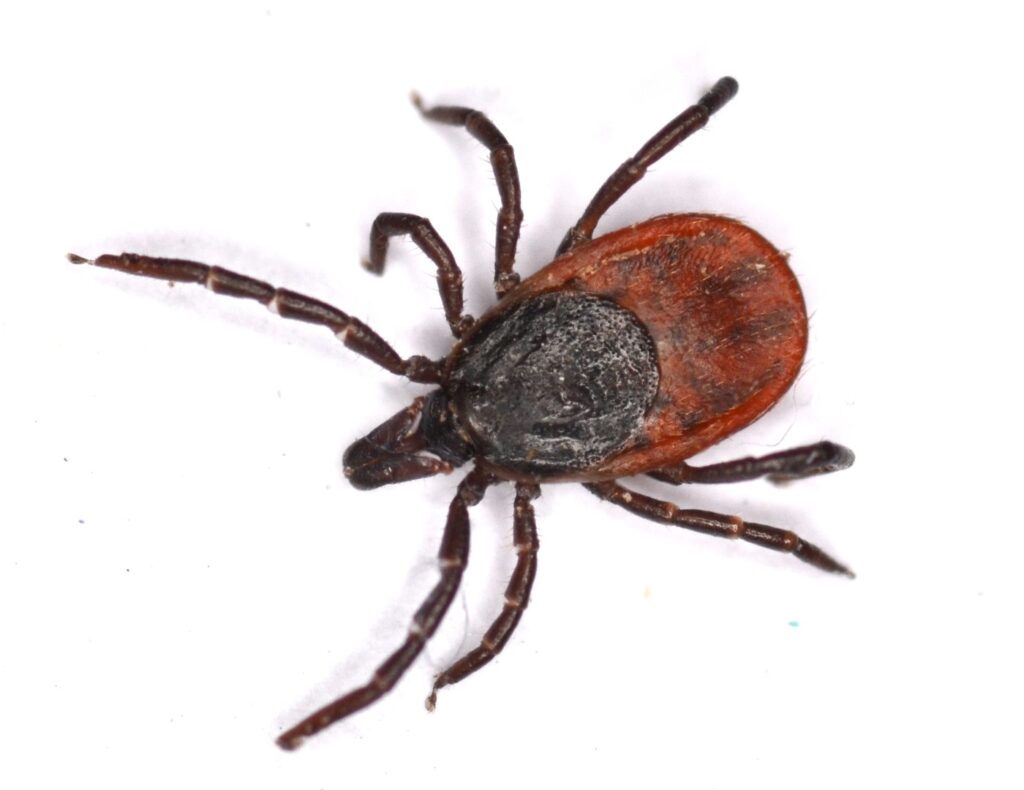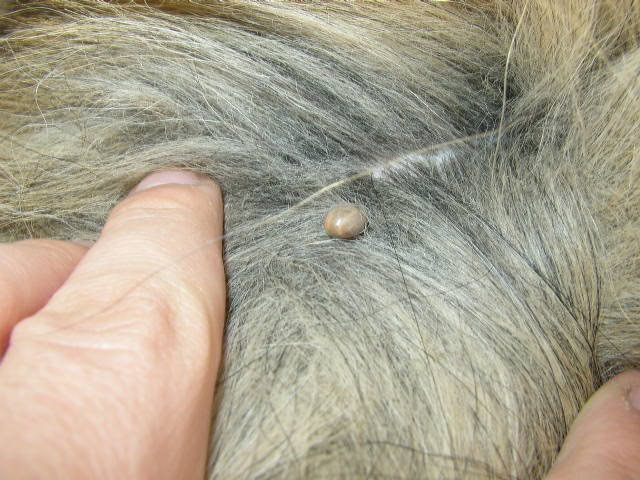Blacklegged Tick
What Is the Blacklegged Tick?
Blacklegged ticks, vectors of Lyme disease, are small with a distinctly flat, oval body that becomes swollen and darker after feeding. Their black legs and pattern-less back make them identifiable. Discovering a tick attached to the skin, particularly after visiting wooded or high vegetation areas—preferred habitats of these mites—is a clear indicator of their presence.
Immediate, careful tick removal upon detection is imperative to reduce disease transmission risks. Using the right tools to safely extract the tick without squeezing its body and ensuring the entire tick is removed is recommended to prevent the inoculation of Lyme disease bacteria.
How to Identify a Blacklegged Tick?
Blacklegged ticks, vectors of Lyme disease, are small with a distinctly flat, oval body that becomes swollen and darker after feeding. Their black legs and pattern-less back make them identifiable. Discovering a tick attached to the skin, particularly after visiting wooded or high vegetation areas—preferred habitats of these mites—is a clear indicator of their presence.
Immediate, careful tick removal upon detection is imperative to reduce disease transmission risks. Using the right tools to safely extract the tick without squeezing its body and ensuring the entire tick is removed is recommended to prevent the inoculation of Lyme disease bacteria.

Additional Information on the Blacklegged Tick
Pest Type
The mite, specifically the blacklegged tick, plays a crucial role in the ecosystem as a parasite but becomes problematic when it serves as a vector for diseases such as Lyme disease.
Appearance
These ticks have a characteristically flat and oval body before feeding, allowing them to easily slip under clothes or into animal fur. After feeding, their body swells and darkens.
Longevity
Capable of surviving up to 3 years in natural conditions, their life cycle includes dormancy periods that allow them to persist through unfavorable conditions.
Habitat
Favoring wooded areas, tall grasses, and underbrush, these habitats provide ideal access to hosts and shelter from predators.
Feeding
Feeding exclusively on blood, they can fast for long periods while waiting for a suitable host.
Life Cycle
The progression from larva to nymph, then to adult, allows multiple opportunities for pathogen transmission to hosts at different stages of their development.
Do I Have a Tick Problem?
If you or your pets have been in risk areas and show signs of tick bites or if you find ticks in your home, it is time to take action. Exterminapro can help you assess and treat the problem effectively.
Signs of a Tick Infestation
- Tick Bite: Tick bites can be unnoticeable or manifest as significant irritation and redness, sometimes accompanied by a distinctive halo, indicating a reaction to the saliva injected during blood sucking.
- Ticks on Animals: A thorough inspection of pet fur after walks in risk areas is essential to detect and remove ticks before they feed.
- Ticks in the Home: These parasites can be introduced into the human habitat by intermediary hosts, including pets or clothing, requiring increased vigilance and prevention measures.


Risks Associated with Blacklegged Ticks
Lyme disease, a serious condition transmitted by blacklegged ticks, initially manifests with symptoms such as fever, characteristic skin rashes, significant fatigue, and in advanced cases, can seriously affect the central nervous system, leading to neurological complications. Additionally, it can cause severe joint pain and long-term cardiac issues.
Active prevention through tick control measures and vigilance in potentially infested areas are crucial to minimizing the risk of contracting this disease. Awareness of prevention methods, such as using tick repellents, wearing protective clothing, and regularly checking for ticks on the body and pets after outdoor activities, plays an essential role in combating the spread of Lyme disease.
What Are the Treatments to Eliminate Blacklegged Ticks?
Exterminapro uses targeted treatments, including perimeter treatments and prevention advice, to control tick populations and reduce the risk of disease.
Preventing Tick Infestation
- Reduce Exposure: Limiting activities in areas known to be infested with ticks can greatly decrease the risk of being bitten.
- Preventive Treatment for Animals: Regular application of specially designed antiparasitic products for pets is a proactive essential measure.
- Garden Maintenance: Regular garden maintenance, including hedge trimming and lawn mowing, reduces favorable habitats for ticks, thus limiting their presence near homes.
Types of Treatments to Counter Blacklegged Ticks
- Perimeter Treatments: Applying targeted chemical treatments around properties creates a barrier that reduces tick intrusion into living areas.
- Prevention Tips: Adopting strategies such as wearing covering clothing during forest walks and using approved repellents can help avoid tick bites.
- Tick Checking and Removal: Learning proper techniques for removing ticks, such as using tick tweezers or special cards, is crucial to prevent disease transmission during their removal.
How to Permanently Eradicate Blacklegged Ticks?
With Exterminapro, benefit from a comprehensive and integrated approach to tick management. Our experts will provide you with the tools and knowledge necessary to protect your family and pets from ticks and the diseases they can transmit.
Intervention Process
How Much Does It Cost?
Get a Free Estimate
The cost varies depending on the extent of the infestation and the treatment methods used. Contact Exterminapro for a free estimate and discover how we can help you return to a safe, tick-free environment.

